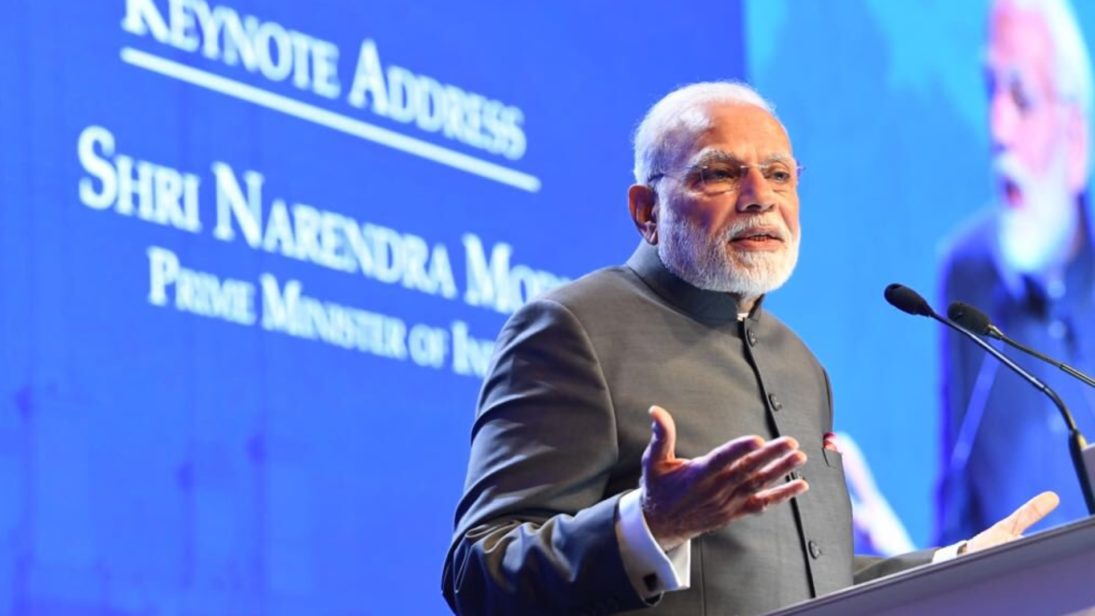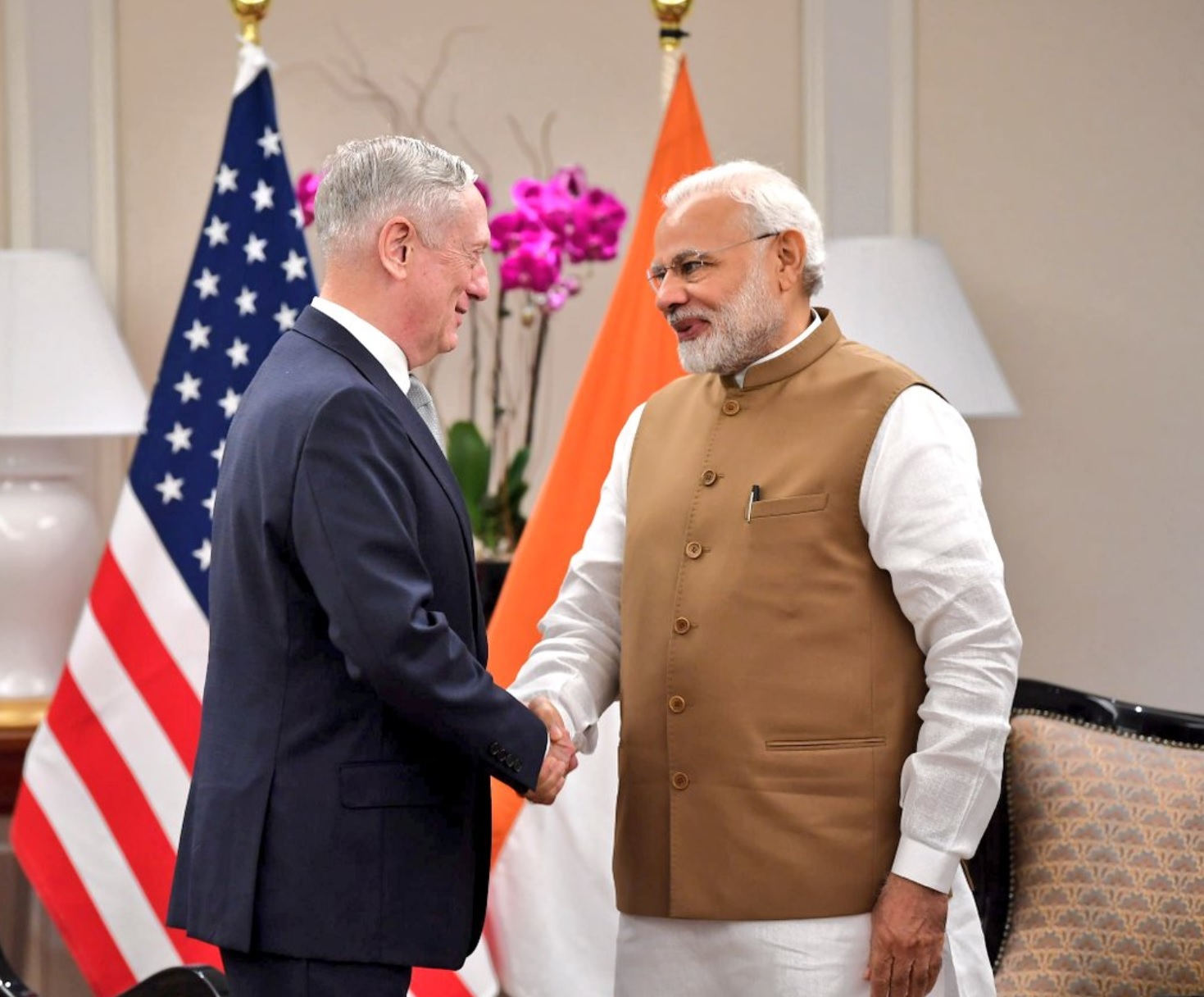
The Shangri-La Dialogue hosted annually in Singapore has established itself as a leading forum for defense diplomacy by coalescing discussions around the most burning questions that beset Asian security. The 2018 edition carried forward that tradition. This year’s dialogue was held at a crucial transitory phase, when nations are re-calibrating their vision from the traditional Asia-Pacific framework to the Indo-Pacific mental map. Fittingly, the keynote address was delivered by the head of state of the nation at the center of this transition – India.
Cooperation, not Competition
Addressing an audience comprising of the most influential defense personnel in the world, Indian Prime Minister Narendra Modi struck a balanced tone and highlighted an inclusive approach to Asian security, embodying India’s established approach to the region – one that considers the centrality of Association of South East Asian Nations (ASEAN) as the foundation of regional stability and prosperity. Moreover, while outlining India’s strategic vision for the Indo-Pacific, Modi emphasized the construction of an Asian order that is characterized by cooperation, not competition. Modi made it clear that, “India does not see the Indo-Pacific region as a strategy or as a club of limited members. Nor as a grouping that seeks to dominate. And by no means… as directed against any country.” The speech rounded off Modi’s successful trip to Southeast Asia and reaffirmed India’s commitment to the region’s dynamic security architecture, prioritizing open trade, freedom of the maritime commons, and a transparent connectivity apparatus.
Modi’s speech accomplished four important things – firstly, it delineated India’s Indo-Pacific vision, one that extends from the eastern shores of Africa to the western shore of the Americas. Secondly, it assuaged countries of Southeast Asia that India’s approach to the region is broad-based and inclusive, and not centered around mini-laterals like the Quad. Thirdly, it accentuated India’s adherence to a rules-based order in the region, positioned around sovereignty and territorial integrity, obliquely opposing China’s confrontational attitude towards territorial disputes in the South China Sea. Lastly, it highlighted India’s long-standing strategic autonomy, and dismissed notions that India had aligned itself with U.S. interests and a U.S. vision of the Indo-Pacific. This was especially significant in the aftermath of the U.S. Pacific Command in Hawaii being renamed the U.S. Indo-Pacific command.
Defending a Free and Open Indo-Pacific
In comparison, the plenary address of U.S. Secretary of Defense James Mattis focused on matters of hard security, and flagged China’s militarization of the South China Sea directly and singled it out for its obstruction to freedom of navigation and commerce in the region. Secretary Mattis outlined the U.S. strategic security vision for the Indo-Pacific and positioned the United State as the foremost defender of a free and open Indo-Pacific. The speech elucidated the extension of America’s strategic interest to the Indian Ocean and informed the world that the Indo-Pacific was the United States’ priority theater of operations. Mattis expounded America’s intentions towards “helping partners build up naval and law enforcement capabilities and capacities to improve monitoring and protection of maritime orders and interests,” ostensibly referring to both India and ASEAN.

Symbolically, the two speeches represented the varying visions of two of the most powerful navies of the Indian and Pacific Oceans and educed the many challenges that accompany an Indo-Pacific-based approach to Asian security affairs. India, by sticking to its long established non-confrontational stance, represented the desire of many nations who hope to avoid a great power competition between China and the United States in this theater. While the United States fronted an Indo-Pacific strategy based on building new partnerships and consolidating old alliances. Echoing the concerns of multiple ASEAN nations involved in the South China Sea territorial disputes, Washington’s approach demonstrated the intent to tackle a revisionist China head on and reverse the strategic balance. Both the Indo-Pacific naval powers submitted these versions of cooperation while agreeing on the principle of ASEAN centrality.
Defense ministers of Vietnam, Australia, and Singapore supplemented the American vision, and called out Chinese actions in the South China Sea for what they are – a brazen infringement of the regional maritime order and international law. Building on these developments, France and the United Kingdom announced a joint maritime task group during the dialogue to challenge Beijing by sailing through the territorial waters of the South China Sea. Additionally, security consultations also took place on the sidelines among the United States, Japan, and Australia on how to stop China from changing the status quo unilaterally. India was missing in all this, choosing instead to project the role of a security stabilizer.
Balancing it all
These developments beg the question: is India shying away from taking a more determined and purposeful stance on the South China Sea? Modi’s trip to Southeast Asia was preceded by amiable visits to Sochi and Wuhan, where he spent time cultivating India’s relations with Russia and China respectively. At a time when the United States and its allies across the world are taking a principled position against these two countries, accusing both of violating international law, India appears reluctant to bandwagon with either group. Instead, as explicated by the Prime Minister’s speech, India necessitates engagement with countries across the board.
At the crossroads of global diplomacy, the Modi administration in India refuses to be drawn into binary designs of international politics and insists on maintaining its strategic autonomy and principle of non-alignment. Unlike for the nations of the Western Pacific and Southeast Asia, the maritime threat in the South China Sea is not immediate for New Delhi. India can afford to avoid engaging Beijing there, and instead focus its naval capacities on securing interests in the Indian Ocean Region (IOR). As relationships and dynamics approach a new normal in this fast-changing security theater, an accommodating India at the center needs to strike the right chord and astutely maneuver its geopolitical interests.
***


